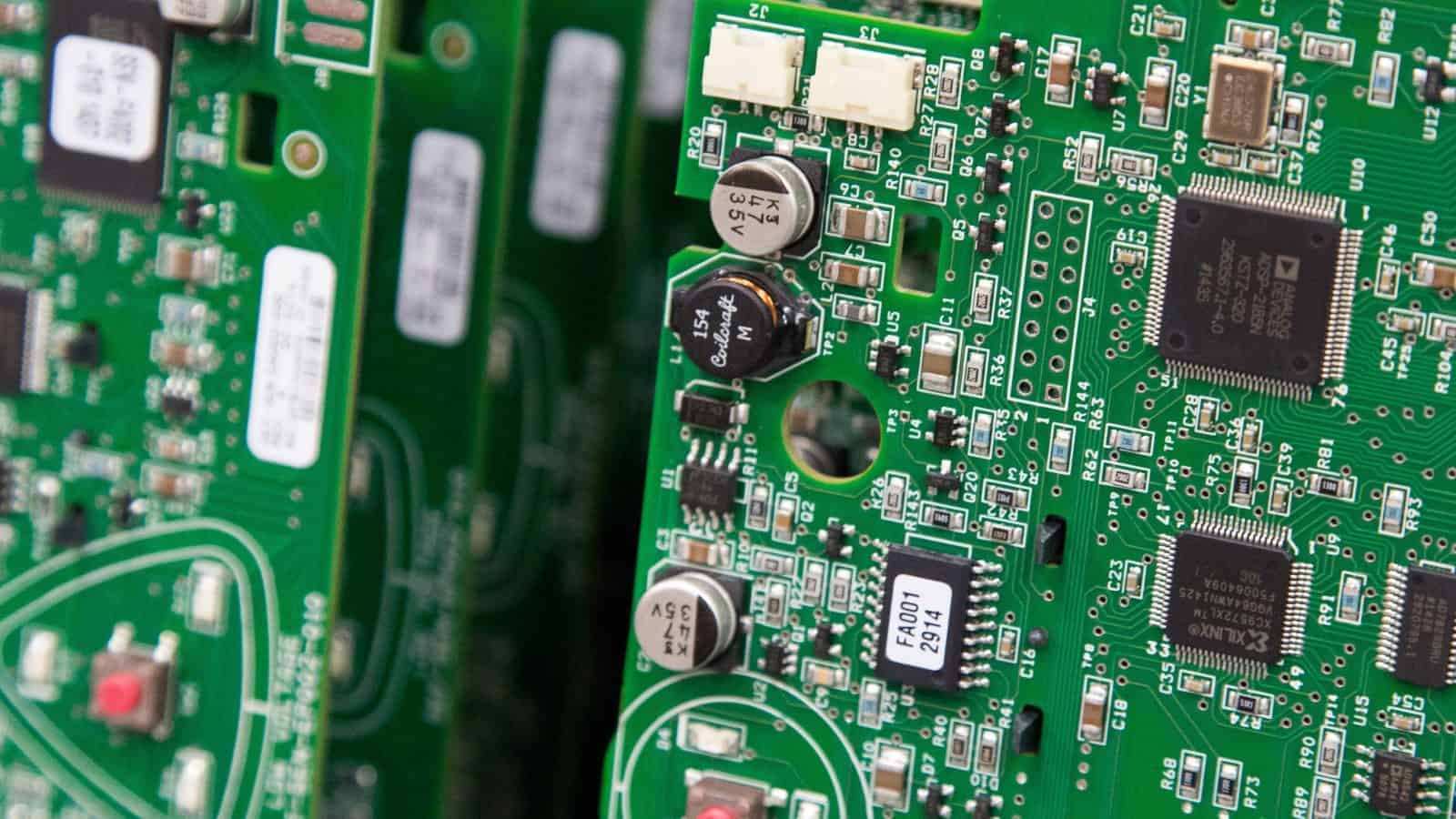NAM Honors Snap-on CEO Nick Pinchuk for Extraordinary Commitment to Manufacturing in America
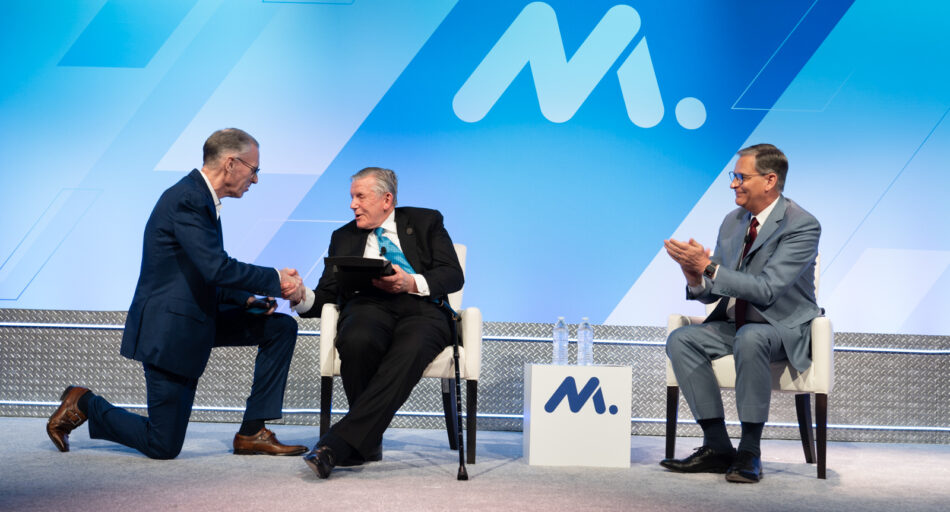
Boca Raton, FL—The National Association of Manufacturers today honored NAM board member and Snap-on Chairman and CEO Nick Pinchuk with the Manufacturing Icon Award during the NAM’s spring board meeting in Boca Raton, Florida. The award recognizes leaders who inspire Americans to promote, perpetuate and preserve manufacturing in America.
“Across the industry and across the business community, executives and employees alike look up to Nick Pinchuk. His storied career is a source of inspiration, and he is a wealth of knowledge, a wise counselor and a tireless advocate for the rewarding careers found in modern manufacturing. He has been a tremendous supporter of the NAM and the Manufacturing Institute’s Creators Wanted campaign to build the manufacturing workforce of today and tomorrow, and his policy advocacy on behalf of the industry is best-in-class,” said NAM President and CEO Jay Timmons.
“His presence on television and in the public eye as a principled manufacturing leader, as well as his unwavering service to the NAM and to our industry, makes Nick a true model for business leaders in America. In whatever he does, he demonstrates an unshakeable commitment to the values that have made our country exceptional and keep manufacturing strong: free enterprise, competitiveness, individual liberty and equal opportunity. We’re honored to present this award to Nick in recognition of his outstanding leadership.”
Pinchuk serves on the NAM Executive Committee as the NAM tax, domestic economic and regulatory reform policy vice chair and on the board of directors of the Manufacturing Institute, the workforce development and education partner of the NAM.
-NAM-
The National Association of Manufacturers is the largest manufacturing association in the United States, representing small and large manufacturers in every industrial sector and in all 50 states. Manufacturing employs more than 13 million men and women, contributes $2.81 trillion to the U.S. economy annually and accounts for 55% of private-sector research and development. The NAM is the powerful voice of the manufacturing community and the leading advocate for a policy agenda that helps manufacturers compete in the global economy and create jobs across the United States. For more information about the NAM or to follow us on Twitter and Facebook, please visit www.nam.org.
How a Tax Change Will Strangle a Small Manufacturer’s R&D
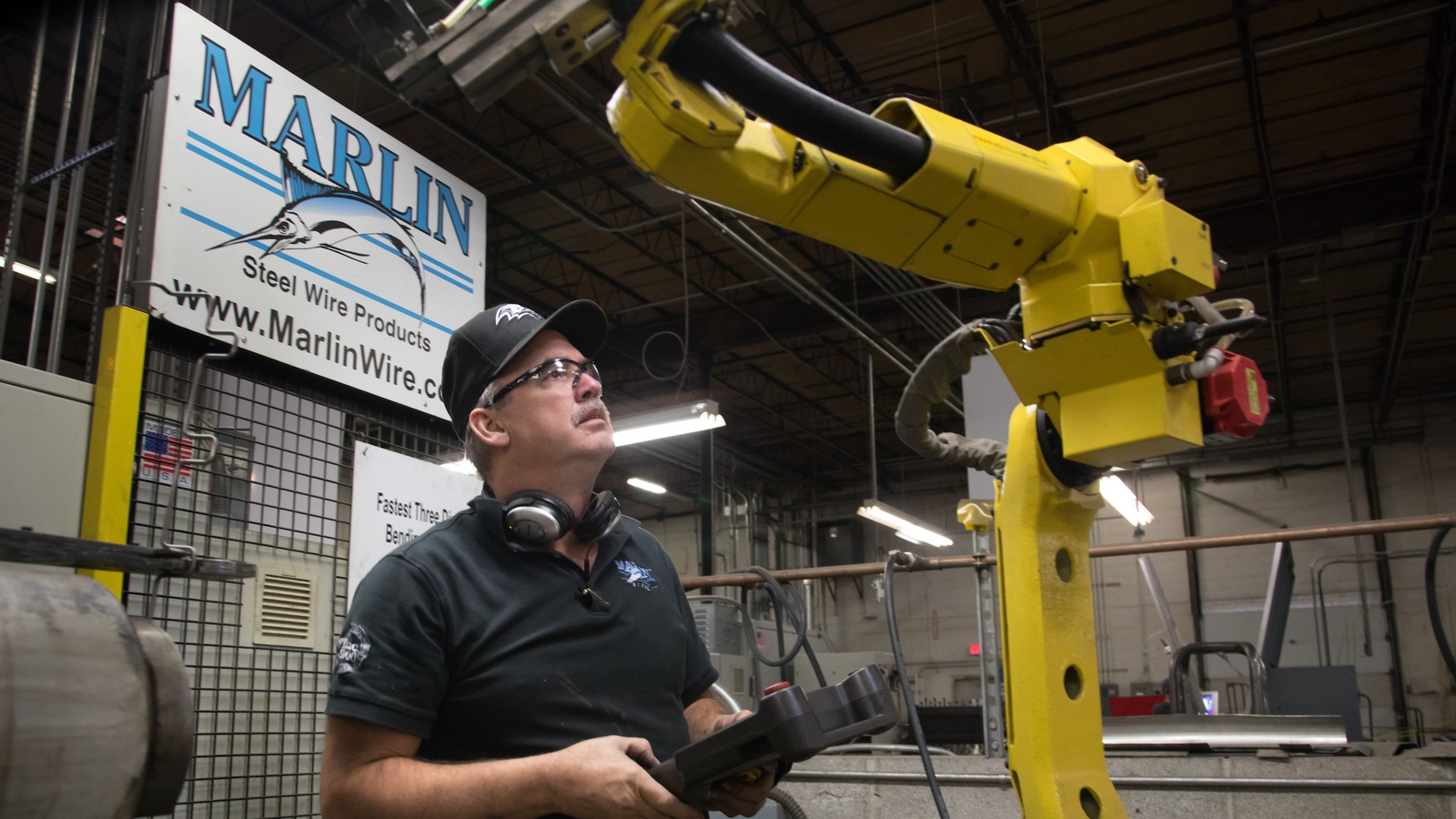
Marlin Steel Wire Products spent its first 30 years making bagel baskets. When Drew Greenblatt bought the custom wire and metal fabrication company in 1998, he thought it would be making bagel baskets for the next 30 years as well—but soon, international competition changed the math.
“Suddenly, China started manufacturing bagel baskets and shipping them to New York City for cheaper than I could get the steel,” said Greenblatt, Marlin’s president and owner. “But then, we got a phone call from an engineer at Boeing who needed an innovative, customizable basket. And that was the eureka moment.”
The shift: Greenblatt recognized that innovation would help him outcompete foreign companies that could manufacture products more cheaply.
- “We realized we couldn’t thrive in a commodities market,” said Greenblatt. “We had to come up with novel ways to make a basket so that it would make no financial sense to buy from China or Mexico.”
- “We wanted to be able to say to buyers, you must buy from the American innovative company, because we’re coming up with such slick ideas that our product blows the competition away.”
The growth: Today, Marlin Steel is nearly 30 times larger than it was when Greenblatt bought it and heavily invested in research and development.
- “Today, Marlin is 15% degreed mechanical engineers,” said Greenblatt. “We have chemical engineers. We’re coming up with the most innovative racks and systems out there.”
- “People are showing us their operations and asking us to reverse-engineer solutions that will work for them. And we’re doing it.”
However . . . A recent tax change threatens to throttle the company’s progress. Until about a year ago, businesses could deduct 100% of their R&D costs in the same year they incurred those expenses.
- But since last year, a tax policy change now requires businesses to spread their R&D deductions out over a period of five years, making it much more expensive to invest in innovation.
The impact: “Our taxes will be $600,000 higher than they should have been this year—we’ll pay four and a half times more on taxes,” said Greenblatt.
- “What that means is that it makes sense for us not to hire six more engineers. Not to buy three more press brakes [machines for bending metal parts] or hire people to work them. It’s incredibly shortsighted, a horrible policy screwup, and the ripple effects are massive.”
The scope: Greenblatt also emphasizes that the tax change will harm many small businesses.
- “People tend to focus on the bigger companies and how it will hurt them—and it will hurt them—but it will also hurt the little guy,” said Greenblatt. “And the little guy is the job creator in America.”
The last word: “American innovation—that’s our secret sauce,” said Greenblatt. “That’s how we’re going to grow jobs and pay people well and give good benefits and steady employment without layoffs. That’s how we’re going to beat a recession. We need to have the coolest, most innovative products in the world. For us, innovation is key.”
Ultragenyx Fights for Cures Amid Rising R&D Costs
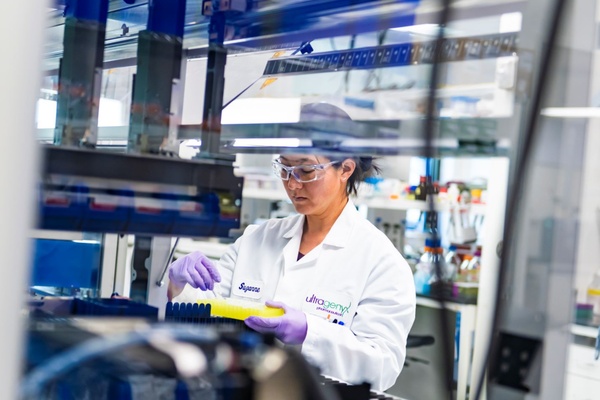
About 30 million people in the United States have a rare disease, according to the National Institutes of Health, which equates to about one in every 10 individuals. Approximately 95% of these rare diseases have no treatment at all—and Ultragenyx, a biopharmaceutical company focused on new and effective therapies for patients with rare and ultra-rare diseases, is working to change that.
- “In the aggregate, rare is not that rare,” said Ultragenyx Executive Director of Public Policy and Public Affairs Lisa Kahlman. “Half of those 30 million people are children. It’s a huge unmet medical need.”
Founded in 2010, Ultragenyx has four commercial products, with about 20 more in pre-clinical and clinical development. But a new change in tax policy poses a very real threat to Ultragenyx’s ability to develop as many treatments for rare diseases as possible.
The issue: Until a year ago, businesses could deduct 100% of their R&D expenses in the same year they incurred the expenses. Starting in 2022, however, a tax policy change requires businesses to spread their R&D deductions out over a period of five years, making it more expensive to invest in growth and innovation. For research-heavy companies like Ultragenyx, that change could divert funds intended for the development of therapies toward tax obligations.
- “Ultragenyx is different,” said Kahlman. “There are a lot of companies that do some work in rare diseases, but usually that’s only a fraction of what they do. We’re exclusively built to focus on rare and ultra-rare diseases, and that requires research.”
The impact: As a small, largely precommercial start-up company that focuses on research, Ultragenyx spends about 70% of its total operating expenses on R&D. In 2021, Ultragenyx spent approximately $497 million on R&D—nearly $150 million more than it earned in revenue.
- If the tax change stands, the company’s financial statement losses, which approximate decreases in the company’s cash reserves, will be adjusted for tax purposes to reflect significant taxable income, resulting in very large tax liabilities over a short period of years.
- This will occur during late stages of the company’s development programs just when costs escalate quickly. Altogether, money will be diverted to taxes and away from critical development programs at precisely the wrong time.
The human cost: If Ultragenyx and other research-heavy biotech companies that are focused on developing treatments for rare diseases must divert funds away from development and toward covering tax obligations, patients living with rare diseases will have even more limited options.
The bottom line: “The therapies we’re developing are really transformational, but in some cases, there might be only about 200 patients in the developed world with one of these diseases—so if we don’t have the money for R&D, there won’t be any incentive for anyone else to develop treatments,” said Kahlman. “For these patients, there is no alternative.”
Our move: At the NAM, we’re pushing Congress to reverse this change and allow manufacturers to invest in jobs, communities and innovation. Learn more and take action at www.nam.org/protect-innovation.
Why R&D Matters to International Paper
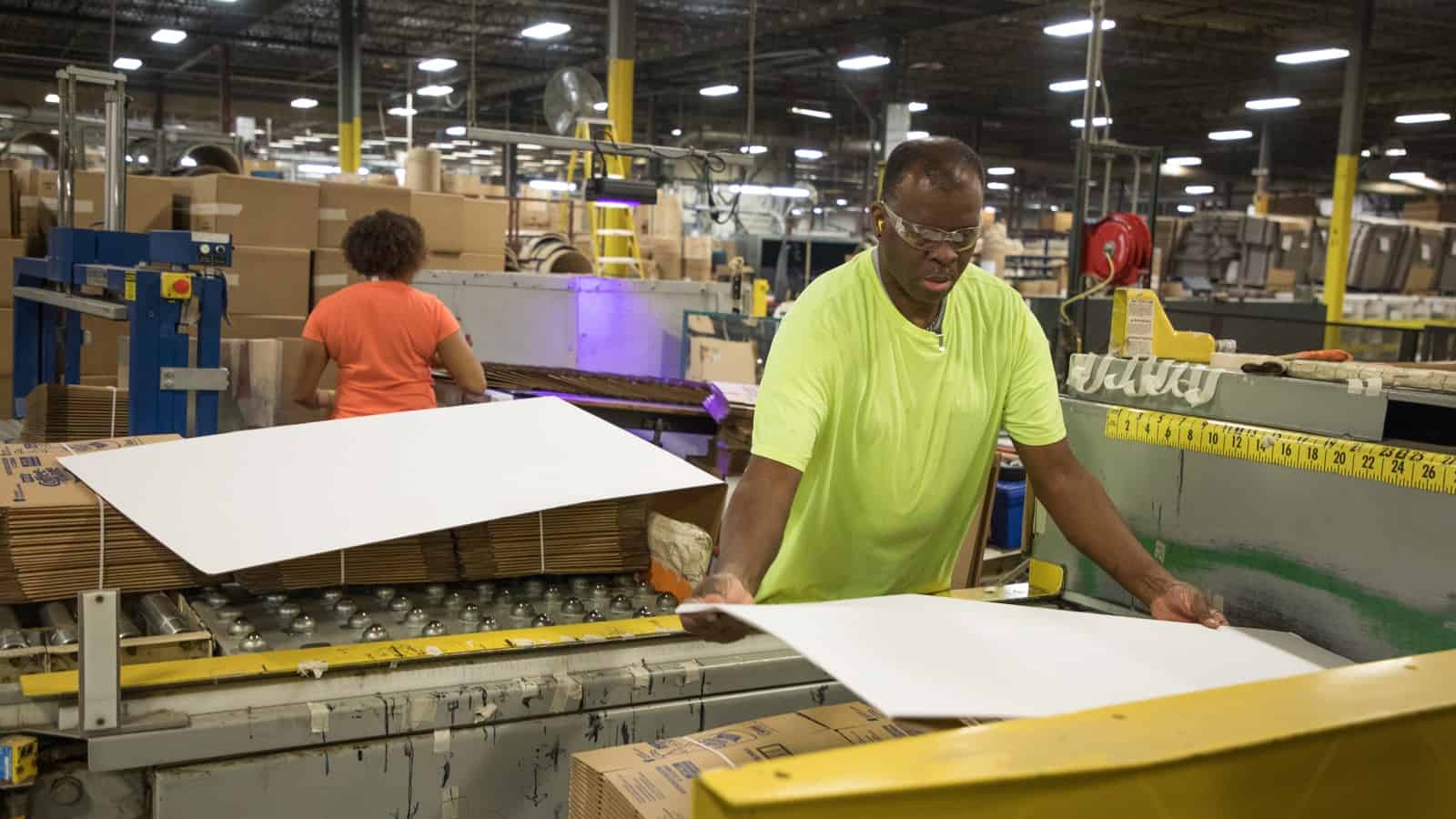
Innovation is getting more expensive—and that should worry all of us.
Until recently, businesses could deduct 100% of their R&D expenses in the same year they incurred those costs. But a tax law that took effect at the beginning of 2022 requires businesses to spread their deductions out over five years instead, driving up the cost of the innovations that keep our economy strong.
At International Paper—an American supplier of renewable fiber-based recyclable packaging and pulp products—that change is causing serious challenges. We spoke to Vice President of Finance and Corporate Controller Holly Goughnour and Senior Director for Government Affairs Kaitlin Sighinolfi to learn more.
Why it matters: “Our company invests in R&D for two main reasons: making better products for our customers and creating safer, more efficient and sustainable manufacturing processes,” said Goughnour.
- “We spend a lot of time and money working to make a better performing, more sustainable and more durable product, but innovation is about more than the product—it’s also about improving the safety and efficiency, and reducing the environmental impact, of our operations.”
The scale: International Paper devotes a significant portion of its resources to innovation, and as a result, the change in tax law has an outsized impact.
- “Much of our free cash flow goes to R&D activities,” said Goughnour. “The change in tax law has resulted in a significant amount of additional cash taxes in this first year, reducing the amount of capital available to invest back into our business, including additional R&D.”
The competition: Goughnour and Sighinolfi also emphasized the need for a tax system that helps manufacturers in the U.S. to compete with companies abroad. According to Goughnour, the new tax change does the opposite.
- “The new tax law enables European and Chinese competitors to accelerate their R&D faster than us,” said Goughnour. “We’re in a global marketplace, and the new tax law puts U.S. manufacturers at a competitive disadvantage.”
- “Almost nobody else in the world has this policy,” said Goughnour. “R&D is an absolute growth engine for the U.S. economy. Why would we have a tax policy that discourages investment in R&D? It makes no sense.”
The last word: “Ours is a supply chain story,” said Sighinolfi. “Innovation should be part of the overall manufacturing value chain, but the new law reduces the value of innovation, slowing investment in innovation and ultimately hurts American businesses, employees and consumers.”
Creators Connect Launched
As part of the Creators Wanted campaign, the NAM and the Manufacturing Institute have partnered with FactoryFix, a leading one-stop solution for manufacturing recruitment, to launch Creators Connect.
The digital career-resources platform aims to address the skills gap and misconceptions about the manufacturing industry, providing manufacturers with a powerful new tool to help build their workforce.
What it is: The platform, which is housed on Creatorswanted.org and powered by FactoryFix, is free to use. It is the first and only unified platform where users can search and explore job openings, career pathways and job training programs across the entire manufacturing sector.
- With more than 400,000 listed job openings, Creators Connect builds on the success of its parent initiative, Creators Wanted.
- It is also working to boost the number of students enrolling in technical and vocational schools or reskilling programs by 25% and to increase the positive perception of the manufacturing industry among parents and career influencers.
Learn more about how to get the most out of Creators Connect by visiting the FAQ page here or reading an article on the launch here. Questions? Contact the Creators Wanted team here.
Melissa Hockstad to Chair NAM’s Council of Manufacturing Associations
2023 Association Executive of the Year Selected to Head Premier Industry Leadership Group
Washington, D.C. – The National Association of Manufacturers’ Council of Manufacturing Associations announced new 2023 leadership at the CMA 2023 Winter Leadership Conference. Melissa Hockstad, president and CEO of the American Cleaning Institute and the 2023 Association Executive of the Year as named by Association TRENDS and CEO Update, will serve as chair of the CMA Board of Advisers. Jennifer Abril, president and CEO of the Society of Chemical Manufacturers & Affiliates (SOCMA), will serve as vice chair. Made up of more than 200 industry-specific manufacturing associations representing 130,000 companies worldwide, the CMA creates powerful partnerships across the industry and ensures manufacturers have the strongest possible voice.
“The Council of Manufacturing Associations is a positive force for collective advocacy, industry thought leadership and association operations. We strive to be the group industry associations choose,” said Hockstad. “The country depends on our leadership, and I look forward to collaborating with the manufacturing association community to strengthen our voice and advance our competitiveness agenda in this new year.”
“Melissa and Jennifer are experienced and accomplished leaders who are well-positioned to continue the cooperative spirit that has made the CMA such an influential organization for our industry. To add to her long list of achievements, Melissa was just named 2023 Association Executive of the Year by Association TRENDS and CEO Update,” said NAM President and CEO Jay Timmons. “I look forward to working with them to promote plans and policies that keep manufacturing resilient and uphold the values that have made America exceptional: free enterprise, competitiveness, individual liberty and equal opportunity.”
Prior to leading the ACI, Hockstad held senior leadership positions at American Fuel & Petrochemical Manufacturers and SOCMA. Hockstad previously served as CMA vice chair.
The CMA’s mission is focused on bolstering the industry’s nationwide grassroots mobilization efforts and improving the competitiveness of manufacturers in the United States. CMA members work with the NAM to unite the manufacturing association community, and ultimately the broader business community, around strategies for increased manufacturing job creation, investment and innovation in America.
Newly appointed 2023 CMA board members include the following:
- Holly Alfano, CEO of the Independent Lubricant Manufacturers Association
- Kerwin Brown, president and CEO of the Bakery Equipment Manufacturers and Allieds
- Charles Johnson, president and CEO of The Aluminum Association
- Heather Rhoderick, president of the Valve Manufacturers Association of America
- Corey Rosenbusch, president and CEO of The Fertilizer Institute
- Leslie Sarasin, president and CEO of FMI – The Food Industry Association
-NAM-
The National Association of Manufacturers is the largest manufacturing association in the United States, representing small and large manufacturers in every industrial sector and in all 50 states. Manufacturing employs more than 12.9 million men and women, contributes $2.81 trillion to the U.S. economy annually and accounts for 55% of private-sector research and development. The NAM is the powerful voice of the manufacturing community and the leading advocate for a policy agenda that helps manufacturers compete in the global economy and create jobs across the United States. For more information about the NAM or to follow us on Twitter and Facebook, please visit www.nam.org.
How Will AI Impact the Manufacturing Workforce?

AI is changing the way manufacturers do business—from the production line to the back office and across the supply chain. At the Manufacturing Leadership Council’s Manufacturing in 2030 Project: Let’s Talk about AI event last month in Nashville, Tennessee, panelists discussed how those sweeping changes would alter, and enhance, the manufacturing workforce.
A collaboration between the MLC (the NAM’s digital transformation arm) and the MI (the NAM’s 501(c)3 workforce development and education partner), the event provided key insights for manufacturers into how technology and workforce trends interact with each other. Here are a few key takeaways.
Net positive: “The history of technology adoption is about improving the job quality of individuals on the shop floor. AI helps them to do the job better, provide them with better tools, gives them greater authority and ultimately increases the value-add of their jobs. All of that is a net positive for those individuals,” said MI Vice President of Workforce Solutions Gardner Carrick.
- By leveraging data and enabling greater efficiency, AI will improve communication, increase collaboration across disciplines and stimulate innovation, according to the panel.
- In addition, “AI can even inform the workforce’s creativity by working with it to design a new product or system,” said Jacey Heuer, lead, data science and advanced analytics, Pella Corporation.
Skills needed: While you might expect that implementing AI requires workers skilled in programming, data science and machine learning, manufacturers will also need to expand their bench of critical thinkers and problem-solvers. The panelists had a few tips to help companies along.
- Invest in upskilling programs to make the AI integration process at your company smoother and develop the talent you already have.
- Update job descriptions to reflect the skill sets the company will need in the next five to seven years.
- Consider recruiting for and teaching adaptive skills—skills that enable individuals to adapt easily to changing demands and environments—which can increase the flexibility of your workforce.
- Build partnerships with local schools, community colleges and technical and vocational schools to develop talent pipelines that will meet your needs.
The human-AI collaboration: While AI will take over monotonous, repetitive tasks, the panelists predicted that the industry will continue to center around human labor.
- “You can teach AI to do X. You can teach AI to do Y. [However,] combining the two may be really difficult for AI, while a human can do it better. You’re going to continue to see humans in roles that center on making decisions and telling stories,” said Asi Klein, managing director, industrial products and organization transformation, Deloitte Consulting.
- Meanwhile, AI adoption will likely lead to an increase in available jobs, as more skilled workers will be needed to guide and inform these new processes.
The last word: “Over the last 12 years, we’ve seen a lot of technology adoption, but we have not seen a lot of job loss. In fact, we’ve seen job gains,” said Carrick. “There is a lot of opportunity to reimagine jobs to add value that AI will help to illuminate.”
D+I In-Person and Virtual Summit
On December 1, the MI held its third annual D+I Summit in Washington, D.C. Attendees were provided with tools and shared experiences needed to create inclusive and equitable workplaces. Strong leaders in this space helped guide the discussions on implementing change and making an impact.
Key Takeaways
- Employee Resource Groups Session (ERGs) – Attendees heard from leaders at McCormick & Company and Pella Corporation on how to create and support employee resource groups. The conversation covered utilizing ERGs as a business imperative, what leadership’s role within ERGs can look like, the process to establish and maintain ERGs, different logistics of ERG maintenance (budgets, roles, and so forth), and more.
- Executive Panel Discussion – Attendees heard from three leaders from Merck, Honeywell, and Armstrong World Industries on how manufacturers are promoting diversity and leveraging inclusion in the communities they operate in. The conversation included reviewing each company’s D&I initiatives and best practices in creating an inclusive workplace that have been implemented, as well as different D&I trainings and advice to fellow manufacturers looking to get started with D&I.
Want to hear these sessions and learn more? You can view a recording of the Virtual D+I Summit here.
How Digital Manufacturing Creates Business Opportunities
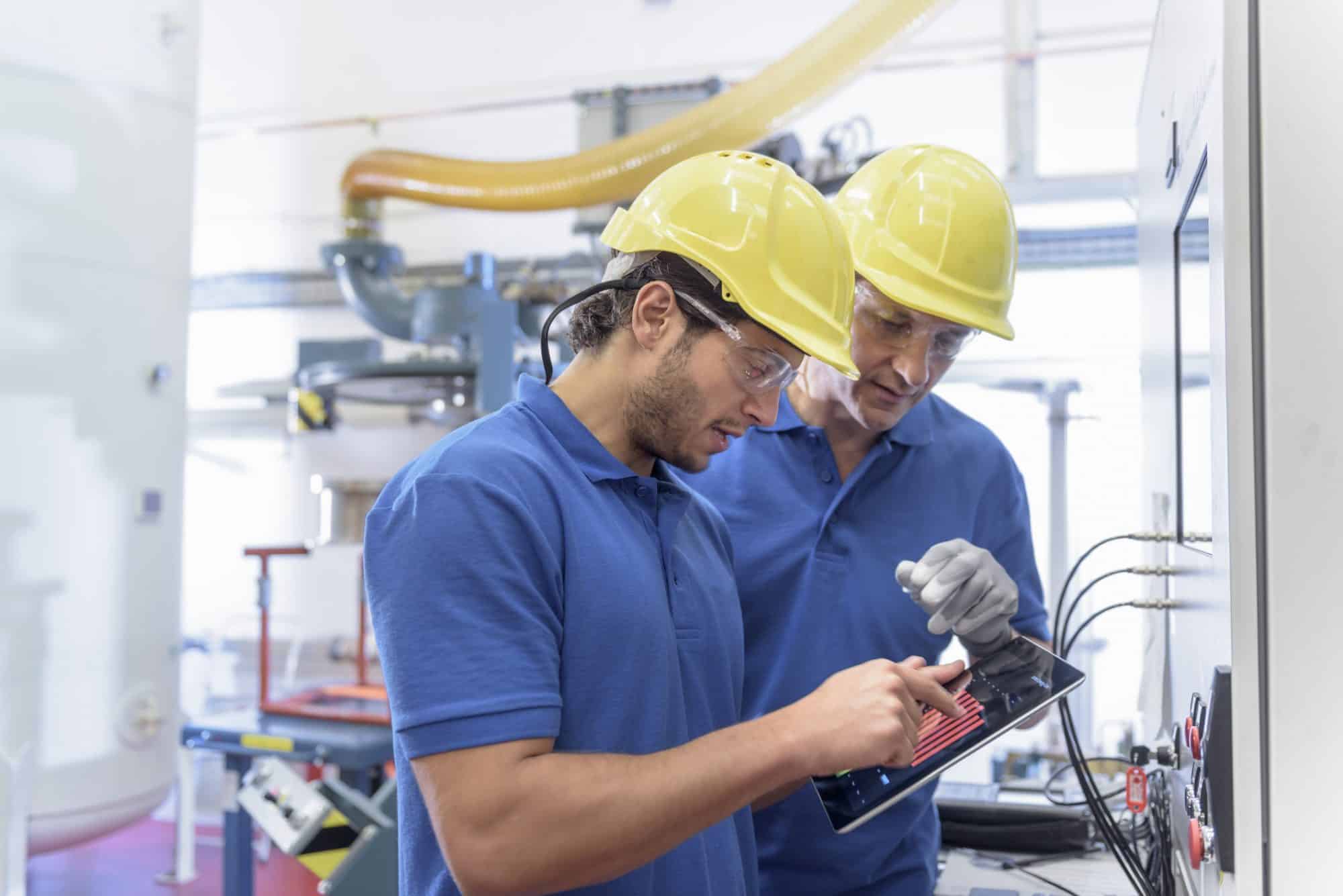
It’s time to think way outside the proverbial box, according to the Manufacturing Leadership Council, the NAM’s digital transformation arm. In fact, as we get closer to 2030, manufacturers are creating entirely new boxes—including new digital business models, products and services, revenue streams, ways to serve customers and opportunities to increase competitiveness.
Collaborative innovation: By 2030, metaverse technologies will provide rich virtual environments for the collaborative development of new ideas. These shared virtual spaces will enable contributors from multiple remote locations to collaborate in real time.
- These collaborations may include manufacturers, partners, academic institutions and research institutes.
- New concepts can be tested in a virtual world before moving to physical prototyping or production.
Outcome-based products and services: As digital platforms mature and products become increasingly smart and connected, the decade ahead may see a boom in more outcome-based services. This is where the customer doesn’t buy a physical product, but instead signs up to pay for the guaranteed outcomes that product or system delivers.
- This shift will require manufacturers to establish new infrastructure rich in predictive analytics, remote communications and consumption monitoring.
- It also requires a mindset change for traditional manufacturing, from a focus on units and costs to product lifecycles, performance levels and usage.
Blockchain networks: By 2030, blockchain could be leveraged for most world trade, helping to provide the secure traceability and provenance needed to prevent physical product counterfeiting, grey markets in medicines and even the adulteration of the global food supply chain.
- A blockchain is an electronically distributed ledger accessible to multiple users. Blockchains record, process and verify every transaction, making them safe, trusted, permanent and transparent.
- Blockchain technologies promise to be a viable solution to manufacturers’ need to automate, secure and accelerate the processing of key transactions across industrial ecosystems.
E-manufacturing marketplaces: Digitally empowered production-line adaptability, such as the kind that emerged during the pandemic, will provide a foundation for companies to offer spare production capacity to other companies in different sectors.
- This maximizes the return on a company’s production-line investments and can generate new revenue streams for the future.
- Combined with e-commerce, e-manufacturing will enable designers, engineers and/or smaller companies to more easily connect with a large pool of qualified producers to deliver and scale a final product.
Manufacturing in 2030 Project: New Boxes is just one of the industry trends and themes identified by the Manufacturing in 2030 Project, a future-focused initiative of the MLC. For more details on megatrends, industry trends and key themes for Manufacturing in 2030, download the MLC’s new white paper “The Next Phase of Digital Evolution.”
Sustainability Is a Top Manufacturer Priority, Survey Shows
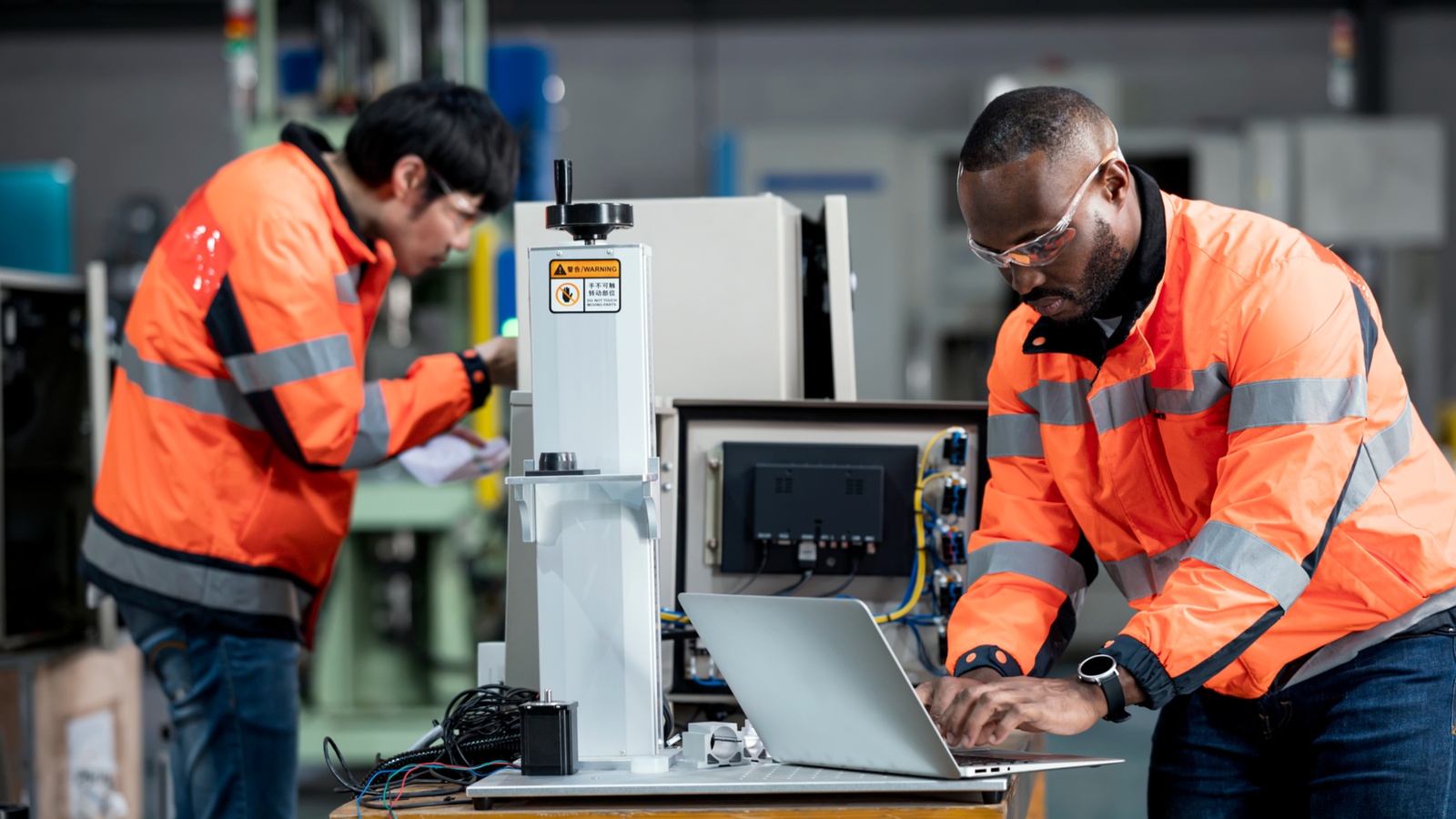
Manufacturers are pursuing sustainability like never before.
That’s according to recent polling conducted by the Manufacturing Leadership Council, the NAM’s digital transformation division. The annual Sustainability and the Circular Economy research survey seeks to determine the progress made in sustainable manufacturing.
Competitiveness: There has been a surge in the number of manufacturing executives who view sustainability as critical to the future of their businesses.
- 58% of respondents in 2022 believe sustainability is essential to future competitiveness compared to 38% in 2021.
- 68% of executives say they are implementing extensive, corporate-wide sustainability strategies. That’s up from just 39% in 2019.
What’s driving change: The motivations go beyond regulatory compliance and cost savings.
- 78% say sustainability is about better alignment with corporate values.
- 68% believe in creating a cleaner, healthier environment.
- 66% seek to improve company reputation with customers and investors.
Top corporate goals: More than half of survey respondents reported having specific sustainability goals and metrics across almost all key functions in the company.
- Goals were most apparent in manufacturing and production (79%), supply chain (69%) and product design and development (67%).
- Additional goals were cited in transportation and logistics (56%) and partner compliance (51%).
Energy efficiency is No. 1: The primary sustainability focus of manufacturers, according to survey results, is energy efficiency and reduction, combined with the transition to renewable energy sources. These efforts are linked intrinsically to meeting net-zero emissions goals.
- 45% of respondents report having announced formal net-zero goals.
- 30% aim to hit net zero by 2030.
Digital tech, employee training play a role: Also on the rise is the number of companies that recognize the importance of digital solutions in their sustainability efforts.
- These tools are being used to manage and monitor materials and energy consumption, optimize operations to improve efficiency and report sustainability progress.
- Respondents also say meeting sustainability targets must include engaging employees through education and training, as well as greening their supply chain.
The last word: An overwhelming 90% of all respondents agree that manufacturing has a special responsibility to society to become more sustainable and accelerate the transition to a future circular industrial economy.
Interested in putting some renewable energy solutions into action, including solar power, battery storage and LED lighting? Programs from utility companies and other entities enable efficiency upgrades with little or no upfront capital. Connect with NAM Energy to explore your options!
